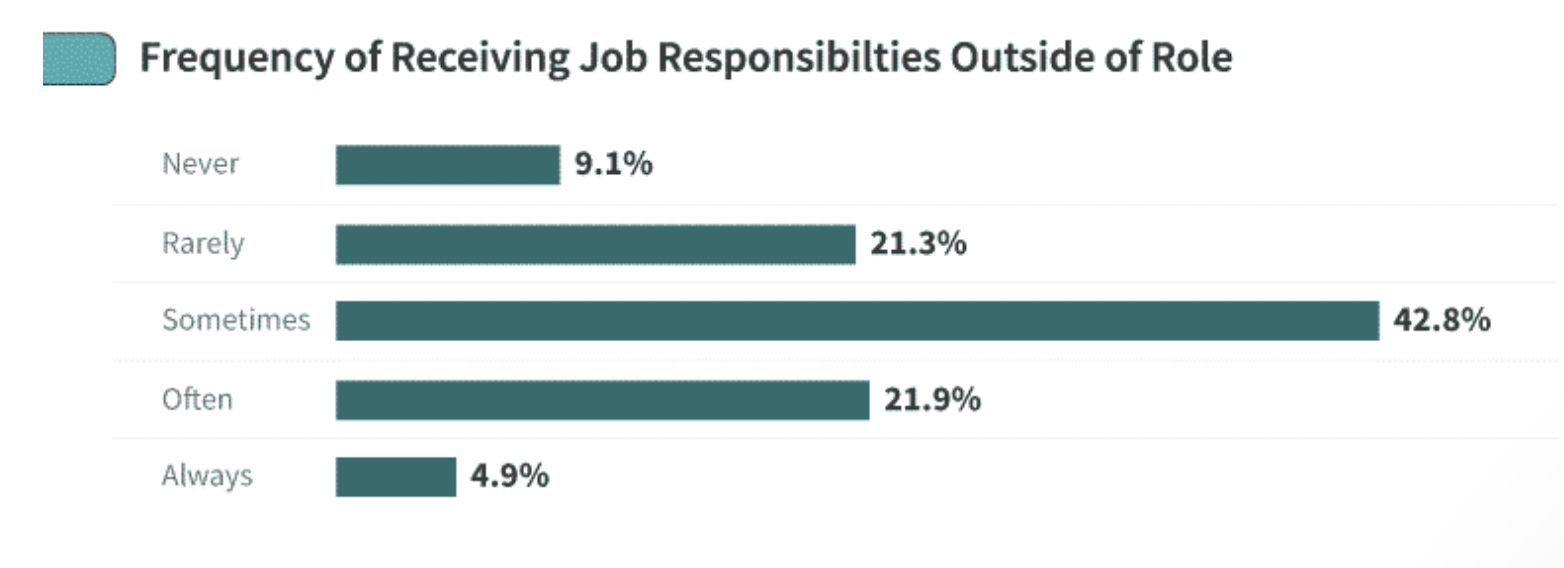

Updated April 10, 2025
In the PR world, it’s not enough to just win earned media and coverage — you often have to hunt down your wins too. Clutch’s 5 PR tracking tips will help make this process accurate and efficient for all public relations team members.
For some, PR tracking and attribution can be a series of rabbit holes: long, arduous, and inefficient. On top of that, the process can get in the way of accurately attributing results to the correct efforts.
In fact, a Cision whitepaper from 2021 found that 77% of businesses aren’t very confident in their ability to measure and highlight the business impact of their activities.
Looking for a Public Relations agency?
Compare our list of top Public Relations companies near you
PR managers shouldn’t fall victim to this trend. There are plenty of resources out there to help craft a strong media monitoring strategy. This article will highlight our top 5 tips for making your current PR monitoring activities into a well-oiled machine.
PR tracking is the process of monitoring the success of campaigns and attributing success to PR efforts and activities.
Here are a few things that a PR manager or professional might track:
Typically an internal PR teammate, external PR agency, or freelancer will carry out PR monitoring — sometimes with the help of a PR tracking software tool. Examples of popular monitoring tools include Cision Analytics, Meltwater, and Critical Mention.
Media monitoring, regardless of the size of the process, is integral to a solid PR effort. Here are just a few reasons why PR teams find tracking important:
Tracking is vital, especially for new or ongoing campaigns. However, tracking doesn’t typically cease until a few months after the release of a PR asset (sometimes longer). It all depends on business goals and when results are expected for a given effort.
Especially online, PR tracking has become more nuanced and complex. It’s easy to sink too much time into tracking or pick up a process that isn’t as effective as it should be.
These 5 PR and media monitoring tips should make tracking wins both fast, easy, and exciting for PR teams.
Looking for public relations assistance? Find the best PR agencies on Clutch.
Now we know that monitoring itself is important, but it’s also critical to do PR tracking regularly and across target channels. The requirements of establishing this workflow are twofold: monitoring across channels and monitoring on a regular cadence.
Let’s start with establishing a regular and consistent tracking cadence. Examining your media mentions often can be what alerts you to a potential PR crisis. The vast majority of PR managers say that crisis management has become more important in recent years.
Keeping a regular cadence also allows you to identify and attribute big wins and adjust strategies accordingly. The more regularly you track, the more you’ll understand your performance.
PR used to be all about print, but it’s since become a different beast. There are seemingly countless media channels that could contain mentions of your brand, so many it can get overwhelming to think about tracking everything.
The good news is that you don’t need to track everything — just the channels you’re actively using to promote or those most relevant to your brand. Here are some popular areas for tracking that you can use as a jumping-off point:
Again, remember that this is just a limited list of examples. There are tons of PR channels that you can add to this list if they make sense for your company and promotions strategy.
Press releases are impactful for your brand during the promotions process, but they can also benefit you from a tracking standpoint.
In fact, Cision found that 78% of journalists prefer to receive news releases over other types of content and promotional materials. This should be reason enough to integrate press releases into your promotions strategies. Still, how does this media relations endeavor support tracking media mentions?
The answer is in your choices of distribution. Many companies circulate their press releases through a company such as PR Newswire, Business Wire, or GlobeNewswire.
After you send your press release out into the world, these newswires track media pickup, impressions, clicks, and sometimes even mentions of your brand within your target audience.

Sometimes, representatives from your distributor may even send you links to articles they found that mention what was discussed in your press release. This can be a huge timesaver for PR managers with a lot on their plates.
Not only do press releases expand your reach in the execution part of PR campaigns, but PR partners can also play a role in filling in the gaps in tracking.
It’s not uncommon for PR teammates to be strapped for time, so it’s important to be able to automate tasks whenever possible.
This is especially true of those working in startups or small businesses — over two-thirds of employees at small businesses admit to taking on responsibilities outside of their job description at least sometimes.

Source: Zen Business
One time-consuming (and often monotonous) area is crafting outreach emails. PR professionals likely communicate with dozens of journalists, bloggers, influencers, and more each week. This can lead to a lot of time typing emails with similar messaging.
Writing individualized emails is still effective and of the utmost importance in the industry, but some outreach can be simplified by being modeled off templates.
For example, if you’re creating an automated sequence of emails, you can templatize common follow-ups. Make a shortlist of the most common responses or reminders you send in emails and create a general template for each sentiment or message.
Here’s a quick example of how a follow-up may be turned into a template:
Hi [Name],
Thanks for your interest in an interview with our analysis on [Press release or findings topic]. We’re looking forward to it but haven’t heard back from you on your scheduling preferences.
Would [Date] at [Time] work for you?
Thanks,
[Your name, contact information, and signature]
The perk of turning this into a template is that PR teams now only need to fill in the blanks to send out reminder emails rather than reinventing the wheel each time they need to send a similar message.
Also Read, ‘23 of the Best Personalized Email Examples’.
A CRM can play a huge role in straightening out a PR professional’s workflow.
As with other types of CRMs, PR software can offer a number of benefits to your PR team.
For instance, these solutions make storing, organizing, and accessing any contact info you have as easy as possible. Since consistent, widespread communication is necessary for PR success, having contacts readily accessible can make a huge difference in your PR team’s effectiveness.
Additionally, PR CRM software lets you segment contacts by a number of demographic information including location, job title, and industry. Whether your team is starting a new PR campaign or working an existing one, this segmentation can help them focus on relevant conversations.
A PR CRM will also allow your team to easily track and automate their correspondence with each individual contact. With the high volume of emails your PR team may send during a campaign, having a record of what they’ve already sent a given contact as well as a means to follow up with them automatically can be a game-changer.
To help you and your team evaluate the success of your campaigns and reconfigure them as needed, this software allows for real-time tracking of metrics relevant to your PR work. You should have no trouble pulling data such as open rates, conversions, and average time on page from your CRM.
If you’re looking to integrate a CRM into your PR toolbox, here are several popular ones:
Using a CRM for PR monitoring can give your team an efficiency boost and help them be more proactive in adjusting campaigns to better meet your company’s needs.
Even with automation and a regular monitoring cadence, tracking activities take time. Some businesses may find it too taxing to devote internal teammates to these tasks — especially small businesses and startups with limited resources.
Instead of retaining the entire media monitoring process in-house, some companies opt to outsource these functions to a PR agency.
Agencies can either be full-service or specialized, which means you can hire them to take on the entirety of your PR activity or just a small part, such as earned media monitoring.
If you’re a PR manager, it’s likely that you’ve already received some inbound pitches from PR agencies or otherwise familiarized yourself with the agency landscape. If not, start your search by getting referrals and recommendations and reading reviews on potential partners.
Creating a list of priorities and characteristics you want your partner to have is also a good idea. This will guide your decision-making in the interview and portfolio review stages. Some criteria you can use include:
Bringing on new team members through outsourcing will require you to do some basic onboarding relevant to your company, target metrics, and current processes. Still, the long-term benefits outweigh training requirements and retainer costs for many.
The best teams make media monitoring painless and efficient.
Companies can begin taking the first steps in this process by prioritizing target channels and leveraging automation where possible. This way, team members can easily keep track of PR performance on a regular cadence.
Your team should also let templates guide their correspondence with PR contacts to ensure emails can be sent quickly while covering all necessary talking points.
Moreover, you shouldn’t be afraid to bring in outside assistance to help your PR team perform to its fullest. Whether that be a press release provider, PR CRM, or an external PR agency, properly working this support into your business rhythms can seriously optimize workflows.
PR is an important marketing function for businesses of all size in every industry. Effective PR tracking will help your company’s PR efforts add the most value to your bottom line.
Connect with a top PR company on Clutch.


